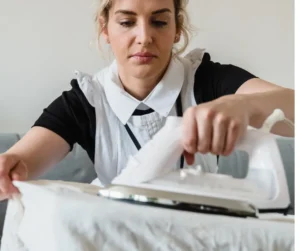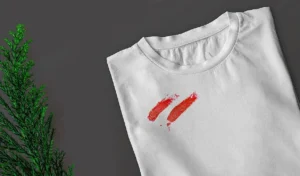Proper storage of dry-cleaned garments is vital for preserving their quality and prolonging their lifespan. This guide provides key strategies to keep your clothes in excellent condition after dry cleaning, whether you’re storing seasonal attire or special occasion outfits.
- Understanding Fabric Care: Tips for Various Materials

Before putting away your dry-cleaned clothes, it’s crucial to know the care requirements for different fabrics. Delicate materials like silk and wool need extra attention to avoid damage. Ensure that the dry-cleaning process has effectively addressed any stains or odors, as these can worsen over time if not treated properly.
- The Role of Climate Control in Storage
The environment where you store your clothing significantly affects its condition. Ideally, choose a climate-controlled space to protect against humidity, temperature changes, and pests. Avoid damp areas like basements or attics, which can foster mold and mildew.
- Choosing the Right Hangers and Supports to Preserve Shape
Invest in high-quality hangers suited to your garments. Padded hangers are ideal for delicate fabrics, while sturdy, wide-shouldered hangers work well for suits and heavier items. Steer clear of wire hangers, as they can distort the shape of your clothing.
- Avoiding Common Storage Errors with Dry-Cleaned Clothes
Certain storage mistakes can cause lasting damage. Refrain from overstuffing your closet, as this can lead to wrinkling and loss of shape. Additionally, avoid exposing your garments to direct sunlight and fluorescent lighting, which can fade and weaken fabrics.
- Utilizing Garment Bags and Protective Covers Effectively
Garment bags and protective covers play a vital role in the storage of dry-cleaned clothing. They protect garments from dust, sunlight, and insects. Opt for breathable bags for long-term storage, as plastic can trap moisture and promotes mildew.
- Managing Long-Term Storage: Keeping Clothes Fresh
When storing clothes long-term, make sure they are thoroughly clean and completely dry. Consider adding silica gel packets to absorb moisture, while cedar blocks or lavender sachets can help deter moths and provide a pleasant scent.
- Optimizing Space: Smart Organizing Techniques for Dry-Cleaned Clothing
Maximize your storage area with clever organizing techniques. Sort garments by type and season, and consider space-saving solutions like multi-tiered hangers or under-bed storage for infrequently used items.
- Handling Wrinkles and Creases After Storage
Upon retrieving garments from storage, inspect them for wrinkles and creases. Gentle steaming is often the safest method to remove these without harming the fabric. Avoid ironing delicate materials unless you’re sure it’s safe.
- Regular Inspections: Monitoring Your Stored Garments
Periodically check on your stored clothes to ensure they remain in good condition. Look for signs of fabric stress, pest issues, or moisture damage, and address any problems promptly to prevent further deterioration.
Preserving the Quality of Your Dry-Cleaned Wardrobe
By following these essential tips, you can maintain the quality and appearance of your dry-cleaned clothing for years to come. For top-notch care and professional dry-cleaning, turn to FCL to ensure your wardrobe remains in peak condition. Get in touch with us today to see the remarkable difference our services can make!




